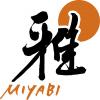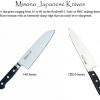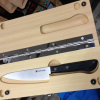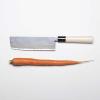What's So Special About Japanese Kitchen Knives?

If you cook a lot of vegetables, chicken, meat and fish, chances are you’re using the wrong knife. Japanese kitchen knives are far superior to the typical German knife because they have a narrower angle (about 15 degrees while most German knives are at 25 degrees).
This means that Japanese kitchen knives are sharper, allowing you more access to a cutting surface that performs just like you’d want a knife to: with cold, hard precision. (Tips on Sharpening knives from our interview with Korin)
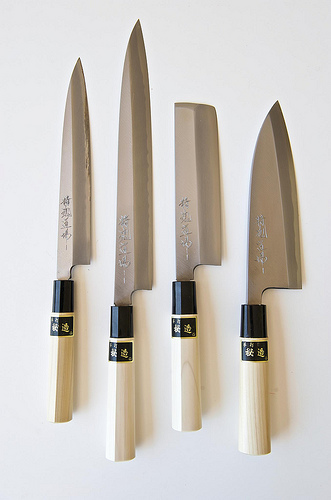
 by thor - Set of Japanese Knives
by thor - Set of Japanese Knives
History of Japanese Kitchen Knives Originally, all Japanese kitchen knives were made from the same carbon steel as the katana blade carried by the samurai warrior. Now, typically stainless steel is used for Japanese kitchen knives.
Types of Japanese Kitchen Knives The two main classes of forging Japanese kitchen knives are known as honyaki and kasumi. The class of the knife is based on the method and material used during the forging process:
- Honyaki knives are true-forged, meaning they are made from one material. Most commonly made from blue or white steel, these knives are forged with top-grade, knife-specific steel.
- Kasumi kitchen knives are forged from two materials, much like samurai swords. The blue or white steel (hagane) is high-carbon and is mixed with jigane, or a soft iron. The two materials form a knife that is more forgiving and easier to maintain than the honyaki.
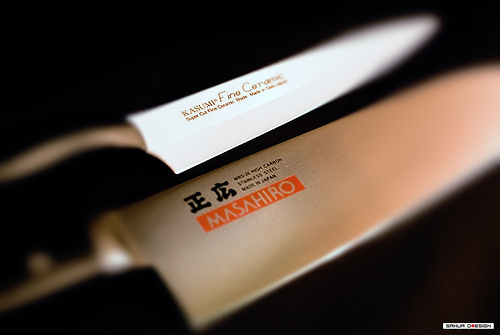
 by sahua - Kasumi Knife
by sahua - Kasumi Knife
The most commonly used Japanese types of kitchen knives are:
- The deba bocho (kitchen cleaver)
- The santoku hocho (all-purpose utility knife)
- The nakiri bocho or usuba hocho (Japanese vegetable knives)
- The tako hiki or yanagi ba (sashimi slicers)
Brands of Japanese Kitchen Knives Some of the most popular brands of these superior kitchen knives are Masahiro, Masamoto, Misono, Shun, Kikuichi, Doi, Hiromoto, Konosuke, Kanehiro, Moritaka, Takeda and Sakai Takayuki knives.


